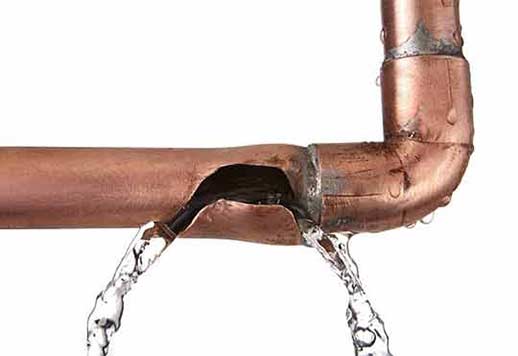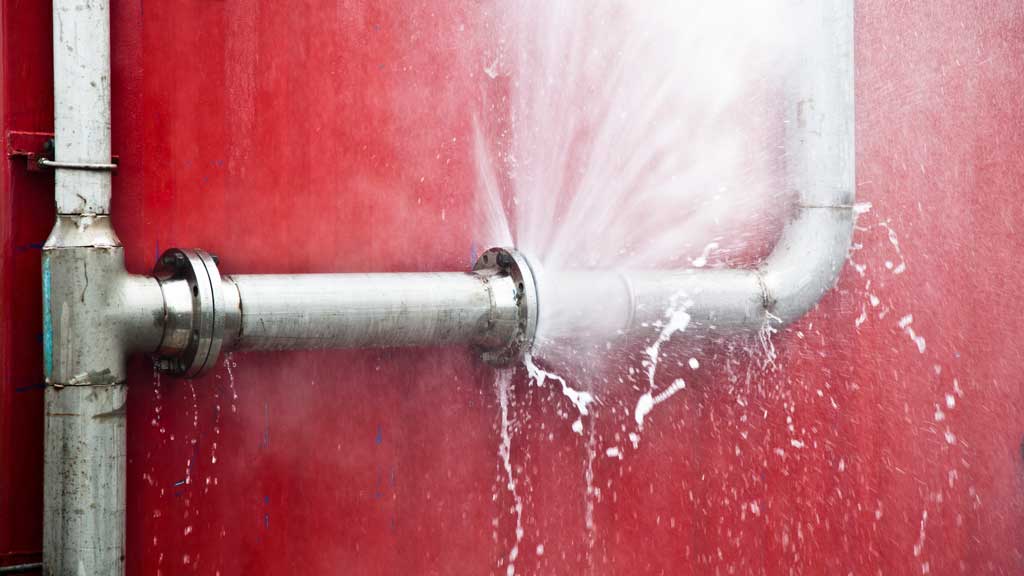Burst Pipe Insurance Claims: What You Need to Know for Water Damage Coverage
Burst Pipe Insurance Claims: What You Need to Know for Water Damage Coverage
Blog Article
What to Do When a Pipeline Bursts: Immediate Tips for Homeowners
A pipe burst can be a property owner's worst headache, resulting in considerable damages if not resolved without delay. The prompt feedback is essential: initially, situate the resource of the leak and shut off the main water valve to prevent more flooding. Following this, draining pipes the pipelines ends up being vital to reduce additional issues.

Assess the Circumstance
Begin by identifying the source of the leak; this might entail inspecting the area around the ruptured pipeline for noticeable indicators of water retreat. If the ruptured took place in a hidden area, such as within a wall surface or under a flooring, look for water spots or pooling that may suggest the place.
Inspect for electrical cords that may be revealed to water, as this presents a significant threat of electrocution. Furthermore, take note of any beneficial products or furnishings that may be at threat of water damage.
Recording the damage via photos can also be valuable, especially for insurance cases. Time is essential, as standing water can result in mold and mildew growth and additional structural damage. By extensively evaluating the scenario, you will be much better prepared to take the necessary steps to minimize further problems arising from the burst pipeline.
Shut Off the Water
The instant top priority after identifying a burst pipeline is to shut down the supply of water to protect against further flooding and damage. Situate the main shut-off valve, normally located near the water meter, in the basement, or on an exterior wall surface. Transforming this valve clockwise will stop the circulation of water throughout your home, minimizing the risk of comprehensive water damages.
If you are incapable to locate the major shut-off valve or if it is malfunctioning, you may need to close off individual shutoffs attached to the influenced pipeline, if easily accessible. Some homes likewise have second shutoffs for particular appliances, such as washing equipments or dishwashing machines.
It's a good idea to acquaint yourself with the location of these valves prior to an emergency situation happens, as this understanding can save beneficial time throughout a dilemma. On the occasion that the primary valve is stuck or challenging to turn, do not require it; instead, think about seeking expert support.
When the supply of water is shut down, take a moment to analyze the circumstance better while planning for the following steps, guaranteeing that your home is as safe and secure as feasible from added water breach.
Drain Pipes the Pipelines
After shutting down the supply of water, it is necessary to drain the pipelines to lessen any continuing to be water that could bring about additional damages. Begin by opening up all taps in the home, starting from the highest degree to the most affordable. This procedure motivates the water to flow out totally, permitting gravity to aid in removing recurring water from the pipes.

Be mindful when draining warm water, as it can cause burns. Effectively draining pipes the pipes is vital to preventing additional issues and assists secure your home from extra water damage websites during this stressful scenario.
Call a Specialist
Following a burst pipeline, speaking to a specialist plumbing professional is vital to ensure a complete assessment and effective repair services. Attempting to handle the situation without expert assistance can bring about additional damage and complications. A qualified plumbing professional possesses the expertise and specialized devices required to determine the source of the leak and address it effectively.
When choosing a plumbing, prioritize those with a strong reputation and relevant experience in emergency situation pipes services. Examining online evaluations, getting referrals, and confirming qualifications can help you make an educated choice. It is advisable to get in touch with multiple experts to contrast feedback times, approximated expenses, and solution offerings.
As soon click here to read as you have actually involved a plumbing technician, offer them with as much information as feasible concerning the incident, consisting of the area of the burst pipe and the steps you have currently taken. This details will certainly aid them in detecting the problem swiftly and precisely.
File the Damage
Once a plumber has actually been contacted and the prompt problems dealt with, it is crucial to record the damages created by the ruptured pipe. Begin by taking clear photos of the affected locations, focusing on noticeable damages to walls, flooring, and home furnishings.
Next, assemble a thorough listing of damaged items, including their approximate value and any type of appropriate acquisition information. This stock ought to include long-term fixtures, personal possessions, and any structural damages observed. Include the estimated cost of repairs based on specialist evaluations or previous quotes for comparable job. if feasible.
Along with written and visual documentation, maintain documents of any type of interactions with your plumber and insurance policy carrier. This details will certainly sustain your case and promote a smoother process for repair work. Be precise in your documentation initiatives, as complete records can dramatically affect your capacity to receive compensation and speed up repair efforts. By taking these steps, you will certainly be better prepared to browse the aftermath of the event - burst pipe.

Final Thought
Immediate analysis of the circumstance, adhered to by closing off the main water supply, is essential. Draining pipes the pipelines and recording the damages useful link makes certain appropriate handling of the case for insurance coverage purposes.
The prompt priority after identifying a ruptured pipeline is to close off the water supply to prevent further flooding and damages. Turning this shutoff clockwise will quit the flow of water throughout your home, alleviating the danger of substantial water damages.
After closing off the water supply, it is vital to drain pipes the pipelines to decrease any kind of continuing to be water that might lead to additional damages. For homes with a warm water heating unit, you must additionally drain pipes the storage tank by attaching a hose pipe to the drainpipe valve and directing the water right into an appropriate container or exterior.
Appropriately draining the pipes is critical to preventing additional difficulties and aids protect your home from additional water damage throughout this demanding circumstance.
Report this page